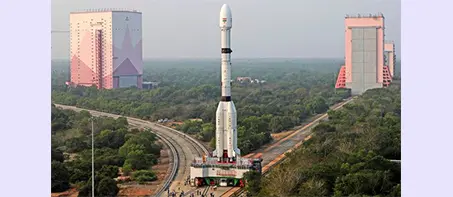
ISRO has officially started the assembly process of the Human-Rated Launch Vehicle Mark-3 (HLVM3) at the Satish Dhawan Space Centre (SDSC) in Sriharikota, marking a significant step toward India’s first human spaceflight as part of the Gaganyaan mission. The launch vehicle will carry the crew module designed with enhanced safety features, ensuring the safety of astronauts during the mission. This milestone was announced on December 18, 2024, coinciding with the 10th anniversary of the Launch Vehicle Mark-3 (LVM3-X/CARE) mission, which launched on the same date in 2014. The beginning of the HLVM3 assembly marks a crucial phase in India’s space exploration journey.
ISRO has completed the human-rating of the LVM3, ensuring the launch vehicle meets all the necessary safety and performance standards required for human spaceflight. Extensive ground and flight tests have been conducted to ensure the vehicle’s systems align with human safety requirements. The newly integrated Crew Escape System (CES) adds an extra layer of safety, providing astronauts with protection during all phases of ascent.
The HLVM3, a three-stage launch vehicle, stands 53 meters tall and weighs 640 tonnes. It is capable of carrying up to 10 tonnes of payload to Low Earth Orbit (LEO). The crew module, which is equipped with multiple redundancies and enhanced safety margins, will fly aboard the human-rated LVM3, ensuring the safety of the astronauts.
The assembly campaign officially commenced on December 18, 2024, with the stacking of key components, including the nozzle end segment of the S200 motor. The S200 motor’s assembly and integration of control systems and avionics are underway. Additionally, the L110 and C32 stages for the HLVM3 are prepared, and key components of the crew escape system have been received for integration.
The Gaganyaan mission is not only a historic achievement for India but also a stepping stone for future space ambitions. It is set to contribute significantly to the construction and operationalization of the Bharatiya Antariksh Station (BAS), India’s proposed space station. This space station will play a crucial role in furthering India’s space exploration capabilities. The integration efforts for the mission involve multiple ISRO centres, including the Vikram Sarabhai Space Centre (VSSC) and the U R Rao Satellite Centre (URSC). The uncrewed flight will serve as a crucial phase leading to the success of future manned missions and expanding India’s space exploration potential.





